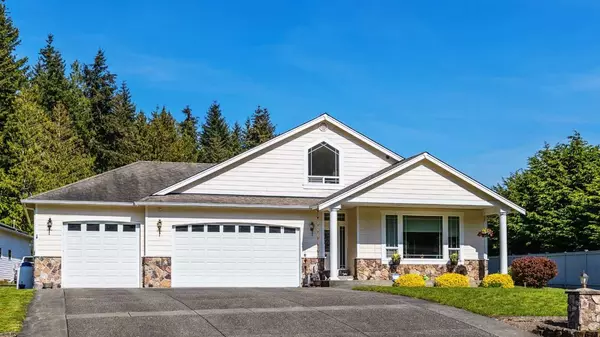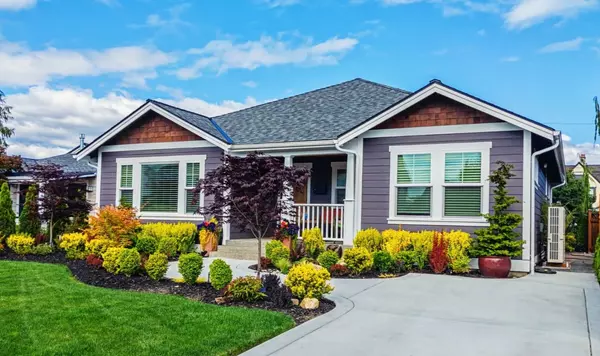How to Successfully Buy and Sell a House at the Same Time

Buying a new home while selling your current one can feel like balancing on a high-wire. But with the right plan and a bit of flexibility, you can make it work smoothly. Whether you're moving for a new job, need more space, or downsizing, here’s a guide to help you manage the dual process of buying and selling a home without overwhelming stress.
1. Understand Your Finances
First things first, get a clear picture of your financial situation. To comfortably buy a new home while selling your current one, you’ll need to know:
- Current Mortgage Status: What do you still owe on your mortgage? This will help determine how much equity you can put toward a new home.
- Budget for Your New Home: Work with a financial advisor or mortgage lender to figure out what you can afford. Keep in mind any down payment, closing costs, and moving expenses.
- Mortgage Pre-Approval: Pre-approval gives you a clear picture of your borrowing capacity and shows sellers that you’re a serious buyer.
A solid understanding of your finances will make decision-making easier and help prevent you from overextending yourself.
2. Research Both Markets
Knowing the ins and outs of both your current and future markets will guide your timing and expectations.
- Local Trends: Check out recent sales, average days on market, and competition in both areas. A buyer’s market (where supply is high) might mean you can take more time buying, while a seller’s market (where demand is high) could help you sell more quickly.
- Pricing Strategy: Understanding price trends can also help you set a fair and competitive price for your current home and decide on a realistic budget for your new one.
- Professional Guidance: Partnering with a skilled real estate agent who knows both markets well can give you an edge. They can help you navigate pricing, timing, and market dynamics effectively.
3. Timing is Key
Coordinating both the sale and purchase timelines can be tricky, but with the right strategies, you can reduce the risk of holding two mortgages or being without a home.
- Sell Before You Buy: Ideally, selling first gives you the cash and removes the risk of carrying two mortgages. However, you might have to arrange for temporary housing in between.
- Explore Contingency Offers: In your new home offer, you can include a sale contingency. This means your purchase depends on your current home selling, giving you some financial protection if things take longer than expected.
- Consider Bridge Loans: A bridge loan, or interim financing, can help cover the gap if you find a new home before your current one sells.
Collaborate closely with your lender and agent to tailor a timeline and financing plan that fits your unique needs.
4. Be Ready to Act Fast
When buying and selling at the same time, being quick to act can be your best advantage.
- Watch for New Listings: Stay on top of the latest listings that match your criteria, and be ready to view them as soon as they hit the market.
- Pre-Approval Advantage: By getting pre-approved for a mortgage, you’ll be in a better position to make strong offers. Sellers prefer buyers who are financially prepared, especially in competitive markets.
Having finances in order and a strong offer ready makes it easier to secure a home that fits your needs.
5. Negotiate Favorable Contingencies
Negotiating contingencies in your contracts can give you some flexibility and peace of mind. Here are some common ones:
- Home Sale Contingency: If you’re buying, a home sale contingency lets you back out of the purchase if your current home doesn’t sell.
- Financing Contingency: This protects you if, for any reason, your financing falls through.
- Rent-Back Agreement: If you sell your home first, a rent-back allows you to stay in the property temporarily until your new home is ready.
Contingencies are great tools, but they can make your offer less attractive in a highly competitive market. Talk with your agent about the best way to balance flexibility with competitiveness.
6. Plan for Temporary Housing Just in Case
It’s smart to prepare for a short-term living arrangement, just in case. Here are some options:
- Short-Term Rental: Apartments or rental homes offer flexibility if you need a place to stay for a month or two.
- Stay with Friends or Family: If it’s possible and convenient, staying with friends or family can help you save money while you wait for your new home.
- Extended-Stay Hotels: While a bit more expensive, some hotels offer monthly rates and basic kitchen facilities, making them a comfortable option for shorter stays.
7. Stay Organized and Communicate Often
Buying and selling a home are complicated processes that involve various professionals, documents, and timelines. To keep things running smoothly:
- Create a Document Checklist: Keep track of everything from mortgage papers to inspection reports. Consider using a cloud-based document storage app, so you can access everything on the go.
- Set Calendar Reminders: With so many deadlines, reminders are essential. From loan approvals to closing dates, staying on top of key dates will keep you organized and reduce stress.
- Regularly Check-In with Your Agent and Lender: Good communication can help avoid misunderstandings and ensure everyone’s on the same page.
8. Embrace Flexibility and Adaptability
Buying and selling at the same time involves plenty of moving parts, and sometimes things don’t go exactly as planned. Embracing flexibility and being ready to pivot if needed can save you stress.
- Be Open to New Options: If your home sale or purchase takes longer than expected, or a potential home falls through, remember that it’s common. Real estate is full of twists and turns, and having backup plans can make the process easier.
- Prioritize Your Needs: Know what’s essential versus what’s a nice-to-have in your next home. This can help you make quicker decisions if needed.
Managing the dual process of buying and selling a home requires planning, patience, and sometimes, quick decision-making. Partnering with an experienced real estate agent can provide the support you need to confidently navigate this complex process.
Whether you're ready to upgrade, downsize, or just looking for a change, taking these steps can help you seamlessly move from one home to the next. With a clear plan, the right professionals, and a bit of flexibility, you’ll be ready to make your move and start your next chapter!
Reach out to Nia Sawyer today for expert support in your buying and selling journey
Categories
Recent Posts










GET MORE INFORMATION

